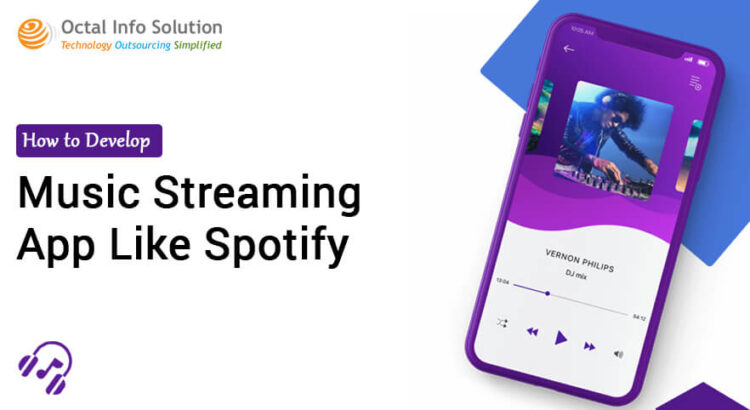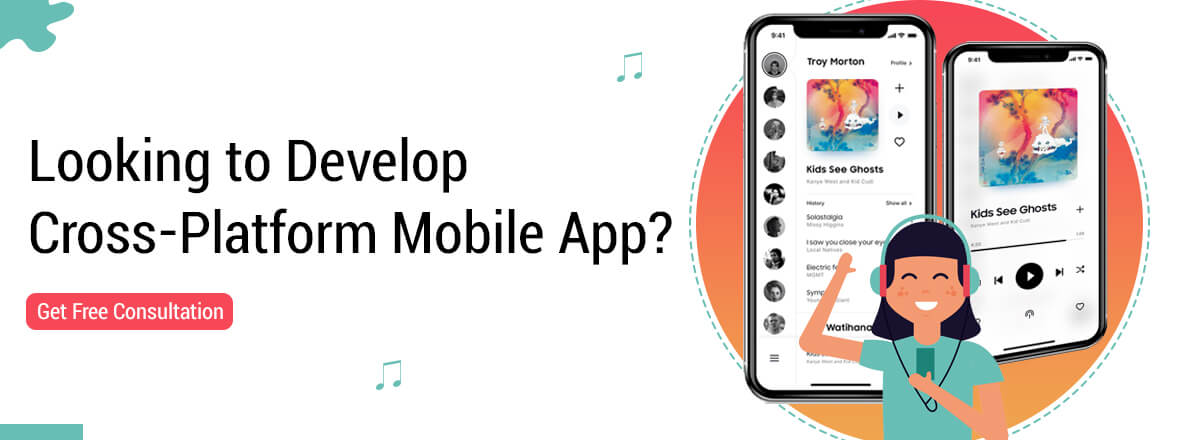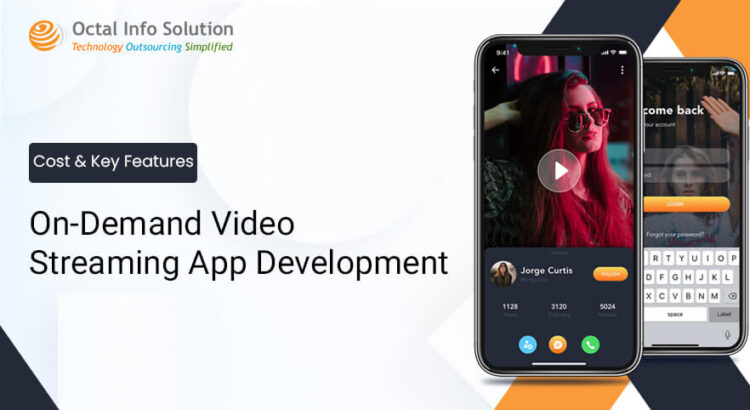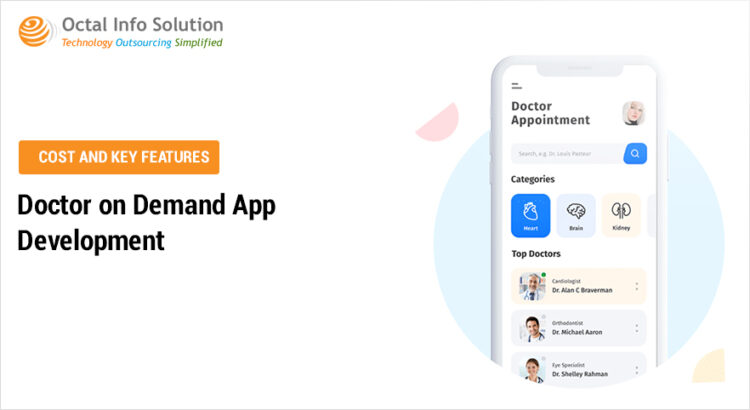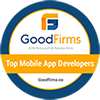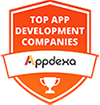“Where words leave off, music begins”- Heinrich Heine
Introduction
Think of one thing you can’t live without? Well, for most of us it is family and friends, but they don’t count here. Now, you might say a smartphone or maybe the internet. However, the thing is, when it comes to most useful everyday stuff, then it is music that wins the race for almost everyone out there. Listening to music for peace of mind is a practice not just among youngsters but even old-age people are not bereft of this craze for music. Let’s understand the On-Demand Music Streaming App Development process.
Music holds an important place in everyone’s life. It is all around and is in our smartphones as well. Today mobile apps have entirely changed the attitude of people towards music, and music listeners’ auditory has turned into a music consumer market. Hence, the number of music apps is rising intensely in app stores.
Latest technologies like AI, AR, IoT, ML, and holograms drive the market of the music industry exponentially.
What Is the Spotify and SoundCloud Streaming App?
Spotify is one of the top online music streaming apps, released in the year 2006 in Sweden by Daniel Ek and Martin Lorentzon. It is designed to give some of the best services to its users. The app welcomes both the artists and users to browse any piece of song, album, or genre on their platform. It is an audio and video app aligned with great compilations to share on social media.
SoundCloud is another big giant in the industry of online music streaming, introduced in the year 2007 by Alexander Ljung and Eric Wahlforss in Sweden, to enjoy services like listening to new songs, tracks, or connecting directly with the fans in real-time. You can find the best quality of music with the curated playlists on their platform.
Market Stats & Growth of Music Streaming Industry in 2021
As it comes to On-demand music apps, there are dozens out there in the market like Spotify, SoundCloud, Pandora, and many more. Thus, one is diminished for choice as it comes to choosing a streaming service.
Out of the worldwide music industry, the revenue share of Digital music format is escalating rapidly, hence the music companies/entrepreneurs are keen on investing in the music streaming apps to ensure a handsome revenue share.
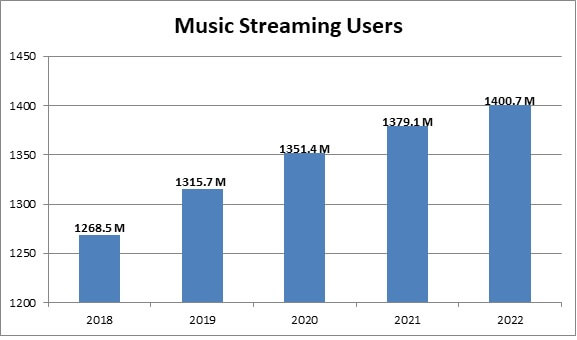
- The revenue of $24711.3M is registered in “music streaming” for the range of years 2021-2027 with a CAGR of 9.8%.
- While in Singapore, the revenue of $58M is going to be projected in the year 2021 with the annual CAGR of 14.87% to reach a volume of $100M.
- The number of users will exponentially increase to 2.2M users by the year 2025.
- User penetration of 35.5% hits from 24.6% will be reached in 2025.
- By 2023, Spotify will land a market share of 98.8M users worldwide.
- Worldwide entertainment gains a value of Two Trillion US dollars, in the year 2020.
- SoundCloud has a specified growth of 176M users per month with an active user presence of 75M per month.
- Spotify has an audience presence of 47.7M users.
- Online music streaming is bifurcated into a range of segments as per the service, revenue model, region, language, etc.
How to create online Music Streaming Applications like Spotify and SoundCloud?
Free music streaming app like Spotify and SoundCloud have marked their phenomenal performance in their respective industries. But wait, nothing can be created in a day. Same as with the mobile applications. It’s a critical process to start anything from scratch, thrive with a lot of patience and enthusiasm till the idea converts into a great application like Spotify. Let’s understand the essential features required to make the app unbeatable for music lovers.
1. Planning
Before starting any application planning is the first step on which the whole product is relying. If planning fails at the earlier process then the project may be stuck in the middle of nowhere. Developers have to plan demographics and the market needs to match with the users’ needs.
2. Developing features:
Registration/Sign-in: Once the user installs the app, they are directed to the registration page. Users can sign-up for the app by entering basic information such as name, age, contact number, country, and a set profile picture (optional). This data is used by the app developers for future analysis and helps to keep track of the user’s music preference to deliver a better music experience. One can also log in via Email, Facebook, or entering OTP received on the mobile phone.
Music Playlist: Once the registration process is complete, the user can choose their preferred songs from a wide variety of genres & a wide setting panel found on the home screen. According to the success level, the app developer cannot just limit the types, offer access to random songs in various categories like “Top 5 of the week”, “Blockbuster songs of the month”, etc.
Search: Search filters tend to be crucial in this kind of app as user’s head to a music streaming app to explore music. This feature helps users in searching through a wide range of databases and music libraries. To make the searching easier and interesting, app developers can set filters for artists, albums, mood, year of release & song names.
Social Media Sharing: It is the time when social media networking is most popular among people and they love to share with friends about their favorite songs or love for the music. Hence, as an app developer, you can offer people to follow their friends and share their playlists with them. Integrate share options with each track so that social sharing becomes convenient.
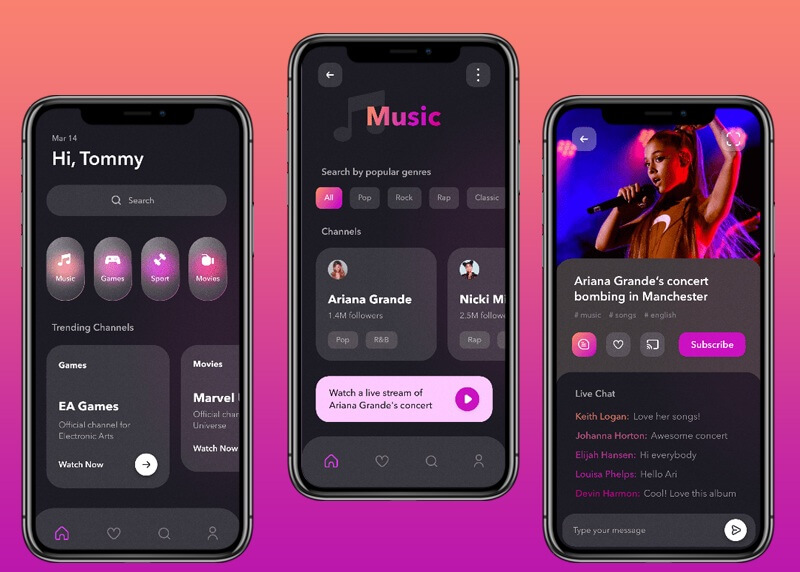
Push Notifications: It is a great way to enhance user engagement. People who are sharing tracks on social media like to stay updated regarding the activities of other people they follow and push notifications are the ultimate means to do so. Besides, the app can also update the users regarding various other things, like when the track is up from their favorite artists, etc.
Offline Music: Often the user’s internet data may be exhausted or maybe there is a poor network connection. In such a situation, if there is no offline music play feature in your app, then the user tends to look for other apps offering offline support. Hence, using the device cache and saving music for offline usage is advisable.
Formats for music app: Bitrate is among the few things which are extremely crucial as it comes to music streaming apps. While developing such an app, developers use a specific format that gets downloaded in a few seconds and plays music without buffering. It is known as M3u8, but the thing with this particular format is that it breaks the bit in smaller packets, has a limited lifespan.
Music Quality: Formats such as Lossless and FLAC offer nice quality but are extremely slow owing to huge size, hence MP3 works better. Even though in the case of earplugs, 128kbit/second is considered best by users who love to stream at 320kbit/second. Hence, developers can offer multiple options and give access to a higher bit rate on premium subscriptions.
Read Also: On-Demand Video Streaming App Development, Cost and Features
3. Personalization:
To make the app more attractive to users, app developers change the themes, suggest songs to the user, and adding features of the audio widget will also be helpful.
- Option to mark songs as favorite
- Enable users to get their tickets booked for approaching music events in their city from the app itself.
- Offer calendar of events all around the year
- Integrate chat functionality
Once all these features have been taken care of, focus on the platform and languages which the App Developer can use to create the on-demand music streaming app.
4. Technical Architecture Required:
Back-end Technologies: App developers mostly use PostgreSQL, Cassandra to make the apps function both on mobile as well as web platforms. However, it is advised to keep JavaScript or Python as the main framework. Few other tools that help to reduce the cost and complexities coming with app development are:
- Kafka Software: Processes & manages data in real-time
- Amazon S3 to store or cache with CDN
- Media Server configuration so the server supports all browsers and devices
- Player configuration is delivered as content-based quality on the internet speed of the user.
- Digital Right Management (DRM) standards to safeguard your content
- GraphWalker to incorporate with Python services and model-based testing
- Dataproc or Google Cloud platforms help in the primary platform structure
- Chromium Embedded Framework (CEF) is better for desktop-based UI
- Bootstrap makes the websites look classy & sleek
- Nginx is easy & open-source, thus apt for proxy server and HTTP
- Cloud Storage efficiently handles a myriad of requests per second
- Content Delivery Networks (CDNs) to securely stream music offering the better user experience
- The audio/Video transcoding feature converts media files into different media formats so that it supports all the major devices and browsers.
5. Best Music Intelligence Algorithms:
Take your app level a notch higher with this cool feature. There are three ways to curate or track the recommendations algorithm:
- Curate music data by human medium
- Usage off audio analysis algorithm
- A mix of both of them
Algorithms keep track of the feedback whenever the user likes or dislikes a song, and accordingly puts the song. Same way, it can track a user’s preferences whenever s/he constantly skip songs. This kind of information is useful in enhancing the users’ listening experience.
6. Getting Licensing:
Music streaming apps are prominent among people as they don’t charge for new songs. However, a legitimate procedure is followed to make this song available for people. Hence, Public Performance Rights are a must to stream music. The app developers need to procure rights and licensing from various organizations in various countries. Among the many ways for licensing deals, the most prominent are:
- According to the stream rate
- Paying through revenue percentage
- Through equity
- Making advance payments for future streams
Licensing can be done by App Development Partner from nation to nation as the global standards have not been set yet.
7. Other Technologies:
- Datastax – Manages Data
- Braintree & PayPal – to accept payments
- Bandwidth, Twilio – to send Push Notifications
- Nexmo – To send SMS, Voice and verify the phone number
- GWT – for Powerful Programming
- Mandrill – to handle emails
- Amazon AWS– for cloud services
- Spark – for real-time analytics
- MKV, MP4 – music formats
- Gmail SDK – for registrations
Monetization methods for music streaming services like Spotify and SoundCloud
Spotify and SoundCloud offer great ways to generate revenues for the music industry companies. Mobile app partners surely get a good chance, to sum up, a good amount by using different business models while customers at the same time experience a good quality of music by paying its price. As per the choice of music the listener wants to listen to, music apps are best to serve them. If you are new to the industry of music, you need to first research different parameters that help you in the long-term revenue. Let’s go through them one by one.
- Subscription model: In this model, the owner can frame a charge to the customers on a monthly, weekly, and yearly basis to benefit them with the premium services without any hassle in the middle. This model is one of the best ways to earn profits and build trust among the users.
- Ads: Advertisement models are a great way to provide customized ads to the users as per their way of searching the music genres. Owners can place some relatable ads on the web page to generate a good amount in return. In the world of music ads are the best way to engage customers at the platform for long.
- Monetizing songs: Spotify and Soundcloud both have offered some of the songs for free to their users. While some songs have a large number of likes and favorites of users, these are editors’ choice songs or favorite songs that can be bookmarked and can be monetized by the developers to gain good benefits in return.
- Promotional: Promotional songs are available just for a few seconds to capture the attention of users. Many new music artists pay a little price to be at the top of the list to reach maximum users for promoting themselves.
Developing an app is not the only task you have to adopt some of the value-generating models to survive in the industry of mobile applications and inspire others with your quality of services.
Cost Required for On-Demand Music Streaming App Development
The total cost to develop a music streaming app is tough. It is ascertained in the beginning as prices vary as per the features. Mostly on-demand music streaming app development costs on a per hour basis as per the timeline and complexity an app involves.
Read Also: A complete guide to estimating cost to build an app in Singapore
As per current standards, the rate per hour ranges from $30-$40, while costs include payments for the Project Manager, App Developers, UX/UI designers, Testing & Quality Assurance Team. Further, the cost varies as per the location.
- S.A. Based Development Companies charge $50-$250/hour
- Eastern Europe Companies charge $30-$170
- Western Europe Companies charge $20-$150
- Indian Mobile App Development companies charge $10 to $80/hour
The cost of developing music streaming apps like Spotify, or SoundCloud is going to cost somewhere around $30k-$50k for both Android and iOS.
It is advised that one when beginning with app development, must focus on unique attributes that make their app stand out.
The secret behind the success of Spotify and SoundCloud
The app store is flooded with plenty of mobile applications. The reason behind this is not only the quality of music artists have made for their users, but also the mobile app industry with diverse music options offered make it a phenomenal experience.
Spotify with the presence of more than 30M songs on their platform offers their customers a wide range of options in the playlists for free music streaming apps. But everything is not free of course. Premium plans are charged a bit to your cost but offer an astonishing experience to their users. Spotify has added plenty of features like social media sharing, few tap access for playlists, radio stations, artists, albums, and many more.
SoundCloud is another giant expert in the music industry with the presence of 130M+ music songs on its platform. more of the mix of music streaming and social media sharing. It helps the users to download the files and listen to them offline. You can share the recorded music on Social media channels.
Both of these platforms are contrived with the best music experience for the users. These platforms easily understand the user’s preferences and save them on the user profile using their intelligent algorithms. Technologies like AI and ML transform the way of every industry. They offer a personalized experience to give relevant suggestions to the users. Better music recommendations enhanced the daily music discoveries on the platform.
Conclusion
People can’t imagine their day without spending their few moments just relaxing with the music. So the possibilities in the music applications like Spotify and SoundCloud are magic and unclonable. The music app industry’s past revenues point over the future scopes inside in this industry.
Discovering the right mobile app development company would be a challenging task for you. Octal Info Solution would be your ideal partner for delivering the right choice of tools and technologies while deploying the app. Collaborate with us to build a future enhanced automotive mobile app product for you.


